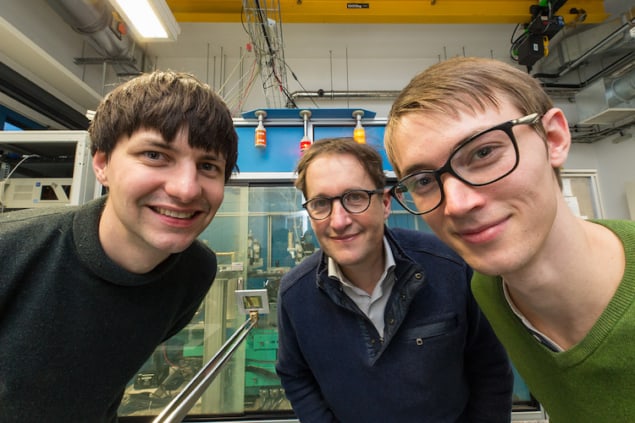
A new technique produces X-ray images in colour quickly and efficiently using a specially-structured device called a Fresnel zone plate (FZP). The technique could have applications in nuclear medicine and radiology, as well in non-destructive industrial testing and materials analysis.
X-rays are frequently used to determine the chemical composition of materials thanks to the characteristic “fingerprint” of fluorescence that different substances emit when exposed to X-ray light. At present, however, this imaging technique requires focusing the X-rays and scanning the whole sample. Given the difficulty of focusing an X-ray beam down to small areas, especially with typical laboratory X-ray sources, this is a challenging task, making images time-consuming and expensive to produce.
Single exposure and no need for focusing and scanning
The new method, developed by Jakob Soltau and colleagues at the Institute for X-ray Physics at the University of Göttingen, Germany, allows an image from a large sample area to be obtained with just a single exposure, while doing away with the need for focusing and scanning.
Their approach uses an X-ray colour camera and a gold-plated FZP placed between the object being imaged and the detector. FZPs have a structure of opaque and transparent zones that are often used to focus X-rays, but in this experiment, the researchers were interested in something else: the shadow the FZP casts on the detector when the sample is illuminated.
By measuring the intensity pattern that reaches the detector after passing through the FZP, the researchers gleaned information on the distribution of atoms in the sample that fluoresce at two different wavelengths. They then decoded this distribution using a computer algorithm.

“We know the set of algorithms that can favourably be used for this very well from phase-retrieval in coherent X-ray imaging,” Soltau explains. “We apply this to X-ray fluorescence imaging using the X-ray colour camera in our experiment to distinguish between the different energies of the detected X-ray photons.”
Thanks to this full-field approach, the researchers say that just one image acquisition is enough to determine the chemical composition of a sample. While the acquisition time is currently on the order of several hours, they hope to reduce this in the future.
Potential for imaging biological tissues
The team says the new technique has many potential applications. These include nuclear medicine and radiology; non-destructive industrial testing; materials analysis; determining the compositions of chemicals in paintings and cultural artefacts to verify their authenticity; analysis of soil samples or plants; and testing the quality and purity of semiconductor components and computer chips. In principle, the technique could also be used to image incoherent radiation sources such as inelastic X-ray (Compton) and neutron scattering or gamma radiation, which would be useful for nuclear medicine applications.
“As a research group, we are very interested in the three-dimensional imaging of biological tissues,” Soltau tells Physics World. “Combining tomographic imaging, for example, with a detector recording the transmitted X-ray beam to obtain a map of the electron density (a technique known as phase contrast propagation imaging) with our novel full-field fluorescence imaging approach would allow us to image structures and (local) chemical compositions of the sample in one scan.”

X-ray microscopy sharpens up
In this first demonstration of the new technique, which is detailed in Optica, the Göttingen team achieved a spatial resolution of about 35 microns and a field of view of around 1 mm2. While the number of resolution elements imaged in parallel remains relatively low, this could be increased by using a FZP with smaller zone widths or by increasing the sample area being illuminated towards larger fields of view. Another challenge will be to reduce acquisition times without increasing unwanted background noise from elastically scattered radiation.
The researchers would now like to try their technique with synchrotron radiation, which is much more intense than the X-ray light available in most laboratories. A further advantage is that synchrotron radiation consists of high-energy beams of charged particles generated using electric and magnetic fields, giving it a narrow bandwidth that should allow for higher spatial resolution and shorter acquisition times. The team has booked time on DESY’s PETRA III synchrotron beamline in June for this purpose.



